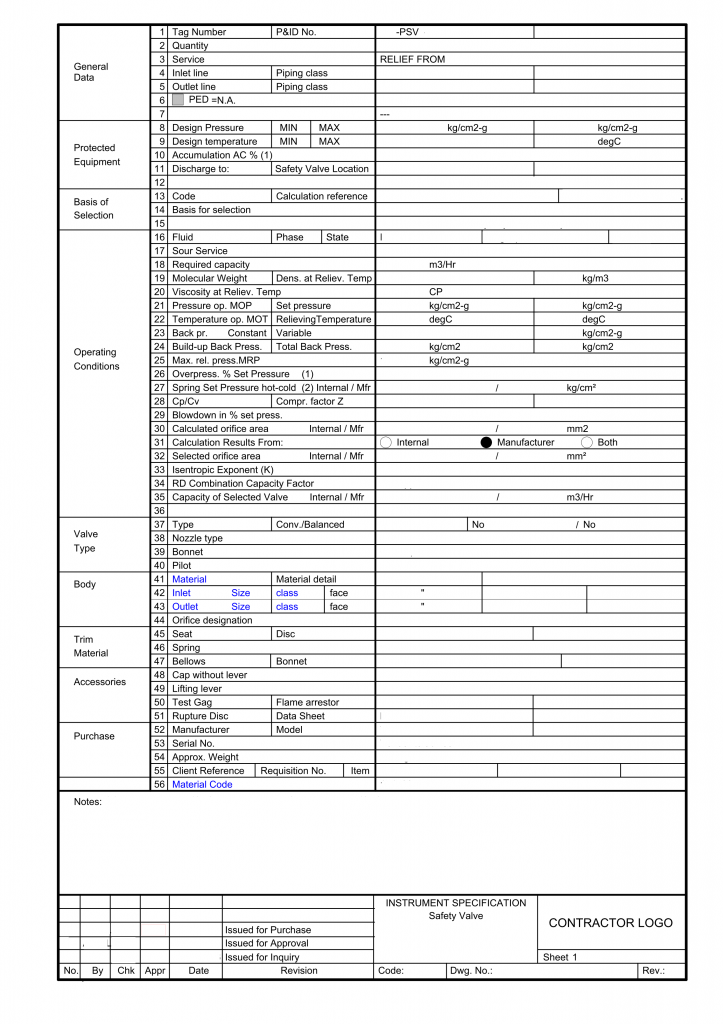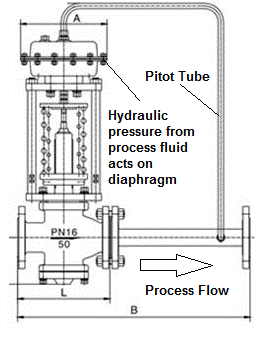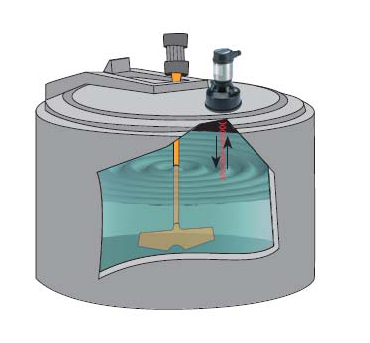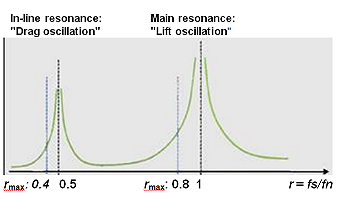A safety relief valve or pressure relief valve is a spring loaded valve that may be used as either a safety or relief valve depending on the application. (API RP 520).
The safety relief valves (PSV, TSV) play an important role in ensuring safety in operation of a processing facility/plant. It serves as a protective device to protect a pressurized vessel or system from an over pressure event. On an event which causes the pressure in a system or vessel to increase to a dangerous level, the pressure relief valve may be the ultimate device to prevent a catastrophic failure.
When ordering a safety relief valve, the user has to provide the Manufacturer with a specification sheet (datasheet) that specifies all necessary information for that relief valve. The datasheet of a safety relief valve should include the following items:
1. General Data:
- Tag name, P&ID Number, inlet line, outlet line, its service (relief from where)
- Quantity of relief valve
2. Information of protected equipment by the relief valve
- Min/max Design pressure and temperature
- Allowable pressure accumulation as % of design pressure
- Safe location for discharge
3. The standards applied for safety relief valve design and selection
The standard applied for design of valve shall be specified in the specification. In petroleum industry, the API RP 520 “Design and Installation of pressure relieving system in refineries” are normally applied. The governing case for relief valve design is the case which needs the highest orifice size of the relief valve. The governing case for relief valves can normally be one of the following: fire, blocked/closed outlet, thermal expansion, tube rupture, valve failure, power failure, etc.
4. Process conditions for the relief valve
This section of the datasheet shows all necessary information of fluid and system conditions that are related to design and operation of the relief valve.
- Fluid phase, state, capacity, viscosity at relief temperature, etc.
- Maximum operating pressure, set pressure
- Maximum operating temperature and relief temperature
- Overpressure in % of set pressure
- Maximum relief pressure
- Maximum backpressure seen by the relief valve when discharging
5. Type of safety relief valve
- Application of the valve: for safety (normally used with compressible fluids) or relief (primarily used with incompressible fluids)
- Type of valve: conventional (whose operational characteristics are directly affected by change in the back pressure) or balanced type (that incorporate a bellows for minimizing the effect of back pressure on the operational characteristics of the valve)
- Type of valve nozzle, bonnet, etc.
6. Material of the valve
This section shows the material selection of each component of the valve such as seat, disc, spring, bellows, bonnet etc.
7. Information of any accessories of the valve such as cap, lifting lever, rupture disc, flame arrester, etc.
8. Notes: any note or specific requirement
A typical datasheet of a PSV is given as below:





